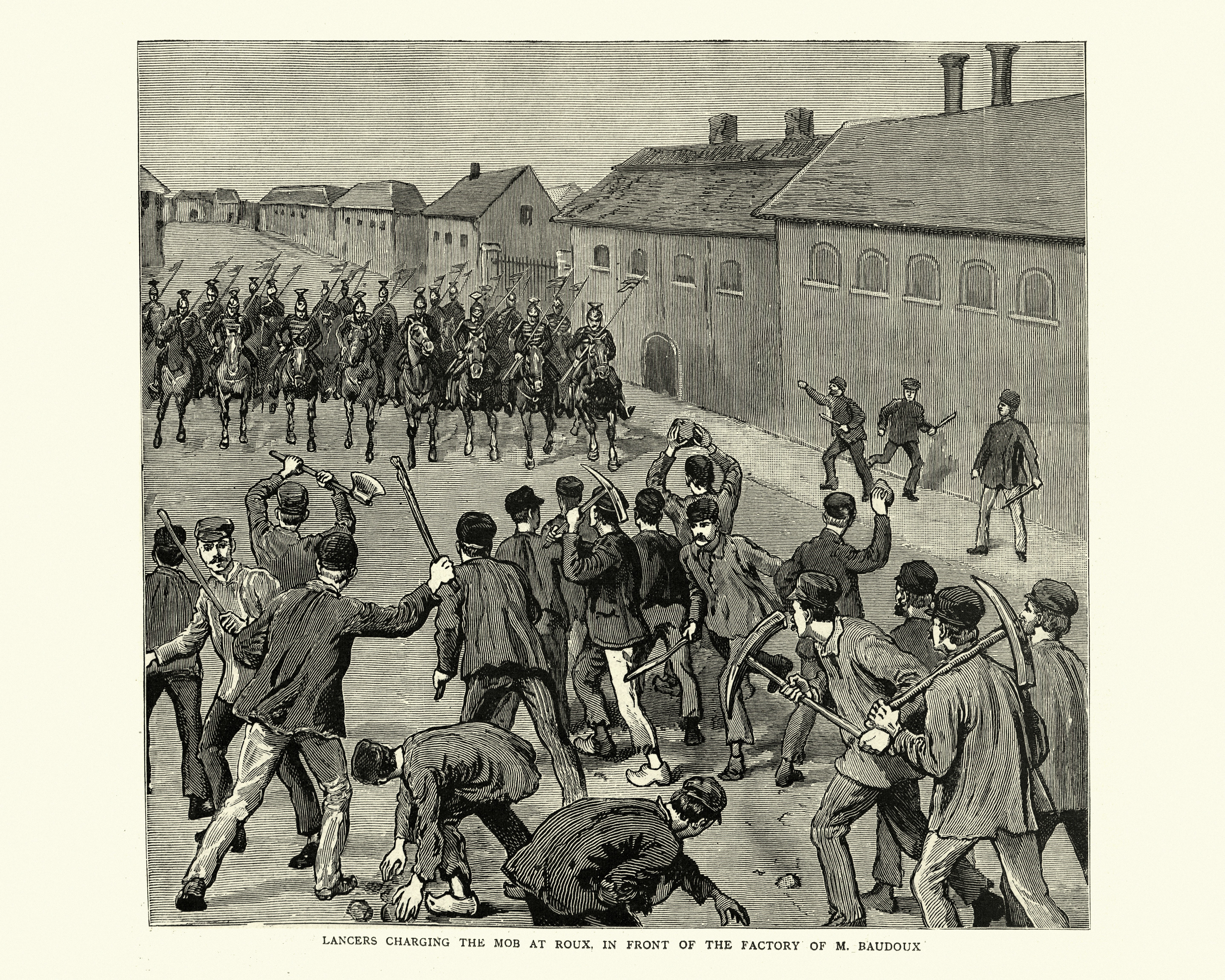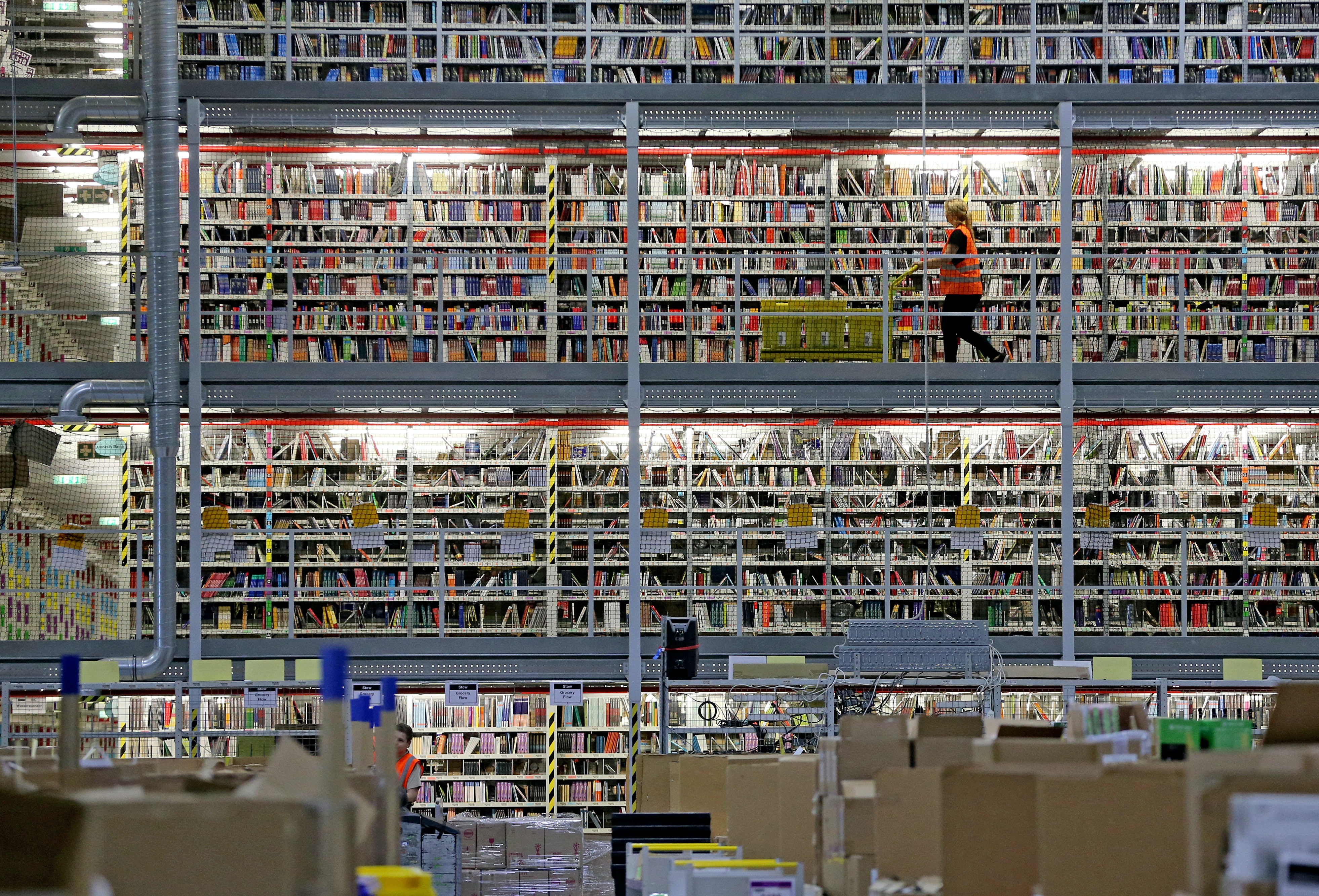There are two general philosophical camps when considering the automated future: those who believe it will be a time where massive numbers of jobs eliminated and large segments of the population will find themselves struggling to make ends meet, and you will also find people who think everything is going to be just fine. The second group will argue that automation will create new types of work and that automation has always been a positive thing in the past.
Those who think automation fears are overhyped often cite the Industrial Revolution, which started towards the end of the 18th century, as a time when there were major changes in the labor market that ended up being positive overall. “Most modern economies have experienced robust wage and employment growth since the Industrial Revolution,” economists wrote for the World Economic Forum earlier this year. “As automation has displaced workers in performing certain tasks, other technologies have emerged to restore labor’s central role in the production process by creating new tasks in which humans have a comparative advantage.”
There is no doubt the Industrial Revolution improved the nature of work, increased how much we were able to produce and helped us progress in other ways. What arguments like this miss is how long it took for most of us to start feeling these positive effects.
Carl Frey, an economic historian at Oxford University and an internationally known automation expert, tells Inverse that people citing the Industrial Revolution is not reassuring.
“In the case of the Industrial Revolution, people’s lives didn’t improve for seven decades,” Frey says. “That’s two generations. I think we need to be very concerned about some of these short-term effects on people.”
Frey says for seven decades wages were stagnant, food consumption decreased and “people’s living standards deteriorated.” The economy was doing quite well, but most of the workers weren’t seeing the benefits of that economy.
“Because people’s living standards deteriorated, people rioted against mechanized factories. The Luddites are often portrayed as these irrational enemies of progress, and to some extent, that’s right if you take a very longterm view,” Frey says, referring to the secret society of English textile workers who only existed from 1812 through 1817 but remain famous centuries later for their organized destruction of mechanical knitting machines. “The Luddites themselves were not the ones who benefitted from the new technology. In fact, their lives were made worse by it. Their opposition made perfect sense.”
Frey is one of the authors of a groundbreaking study from 2013 that found nearly half of all jobs will be at risk of being automated within a decade or so. Experts have claimed in recent years that up to 800 million jobs worldwide could be automated within 10-15 years.
Frey says that beyond the Industrial Revolution, the recent history of automation hasn’t been entirely positive, either. Frey explains that in the past four decades, factory wages have decreased by 30 percent and people in these industries have seen their standard of living go down in multiple ways.
“If you look at the places where manufacturing jobs have disappeared, you see problems emerging like rising crime, declining marriage rates, worsening housing outcomes and so on,” Frey says.
Moshe Vardi, a professor of computer science at Rice University, tells Inverse that dealing with the effects of the Industrial Revolution required major political reforms.
“If you look at the Industrial Revolution, you find that the first 100 years were actually very bad. For the first 70 years of the Industrial Revolution, productivity increases but workers are suffering,” Vardi says. “If you want to know how we dealt with the Industrial Revolution, we did it by introducing the modern social welfare state. It was a huge fight to do this. It was not an easy transformation. It took us until the middle of the 20th century to do it.”
Vardi isn’t kidding when he says there were major battles along the way. This was an era that produced two communist revolutions. There were many major worker riots, and workers’ unions fought hard for things shorter work weeks, shorter workdays and benefits for many years.
“There were strikes, and the police came and shot the strikers,” Vardi says. “There were bloody fights over this.”


Furthermore, what we’re facing right now could be seen as two Industrial Revolutions happening at the same time. In robotics, engineers are rapidly developing robots that are capable of more and more complex tasks. A decade ago, a robot could barely walk on two legs. These days, robots are being developed that can do parkour, harvest fruit, cook your dinner and more. As robots become more capable of completing complex tasks, they will start replacing people in industries like agriculture, retail, foodservice and beyond in the not-too-distant future.
Amazon is ravaging the retail industry and forcing droves of small businesses to shut down. As retail becomes more and more dominated by e-commerce, it will become much easier to automate. An array of smaller brick and mortar stores are slowly being replaced by large warehouses. Amazon warehouses currently have people working alongside robots, but soon enough it’ll be almost entirely robots.
“Companies like Amazon are working very hard to develop robots that can package stuff. Not only move stuff but package stuff,” Vardi says. “Warehouses are a lot easier to automate than lots of small stores.”
Amazon is opening brick and mortar stores around the country, but those stores don’t require cashiers or really any other regular workers. People just walk in, get what they want and go.


On top of robots becoming more capable and cheaper to produce, artificial intelligence is now reaching a point where it will be able to replace people in many higher-paying positions. A.I. will be able to replace people in industries like finance, engineering, tech, customer service, science and beyond.
“The potential scope of automation is very broad,” Frey says.
“You already see lots of automation of white-collar jobs that require decision making. For example, if a bank is going to decide whether or not you’re going to get a loan, those kinds of jobs are being automated not by robots but just by A.I.,” Vardi says. “High-end lawyers won’t be automated, but paralegals—their job is routine—they could be automated just using software.”
Vardi says “nobody knows” if people in these well-paid industries will be able to adapt to these changes. They’re surely more equipped to adapt than people working in factories and warehouses, considering they typically have a college degree and skills the job market finds desirable, but one could argue only so many of them will be able to fill jobs in the industries that haven’t yet been automated.
There will certainly be jobs these technologies will create that either don’t exist now or just aren’t very common yet. We will need people to build new technologies in the automation world and help maintain them. Jobs will at some point exist that we could never imagine today. However, it seems unlikely automation will create nearly as many jobs as it destroys.
“I think these technologies will probably not create that many jobs directly. I don’t think 40 percent of the workforce is going to go and write code,” Frey says. He says there will be new jobs we haven’t come up with yet that will someday become relatively common and certain specialty jobs that serve the wealthier among us might proliferate. However, this era of automation could see significantly more jobs eliminated, rather than created. Countless jobs could soon become completely automated, rather than changed by the introduction of new tools that increase productivity.
Robots and A.I. aren’t just going to change how we work. In many cases, they will completely replace human employees. You can only learn so much by looking at the past, because we’ve never had technology that’s nearly as advanced as what’s being developed today. Comparing the development of the cotton gin to the creation of robots that can complete pretty much any task humans can seems more than a little bit naive. The negative effects that will come from this era of automation may mirror the effects of the Industrial Revolution in certain ways, but the kind of technological upheaval we’re facing is truly unprecedented.
Will we survive this new era of automation? Certainly. Will it be beneficial in the long run? Most likely. However, over the next few decades and possibly longer, this wave of automation could do serious harm if we do not prepare ourselves for it. Many of us could find ourselves struggling to survive in an economy that looks wholly different from the one we see today. I fear if we wait until the last minute to adapt, we’ll be too late to prevent the suffering developments in robotics and artificial intelligence could produce. When you wait until you are forced to act, you will find yourself with less options than you had before.